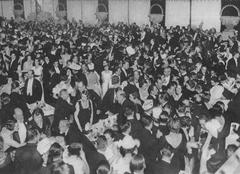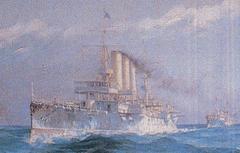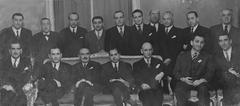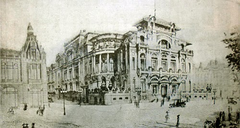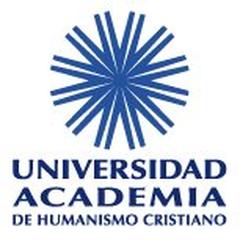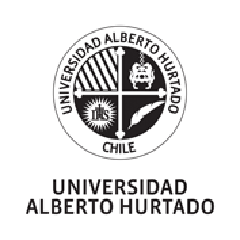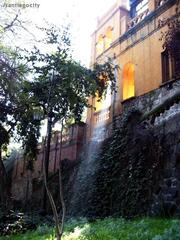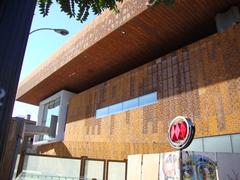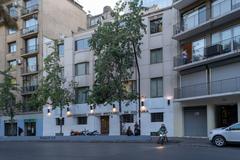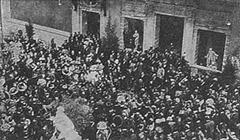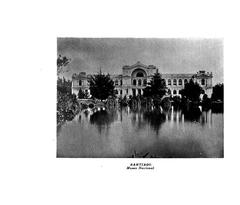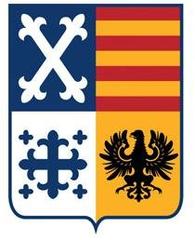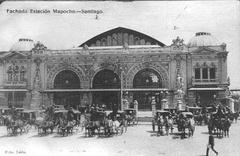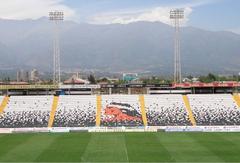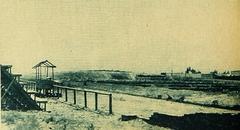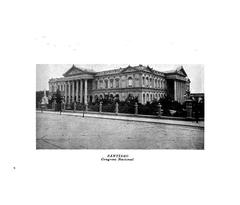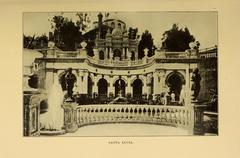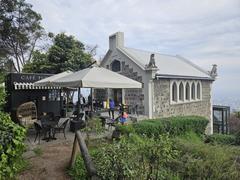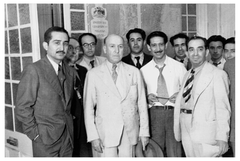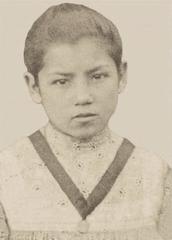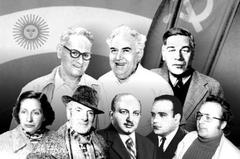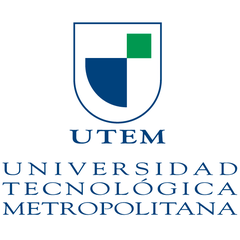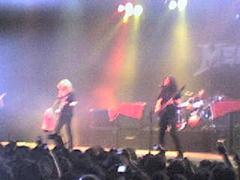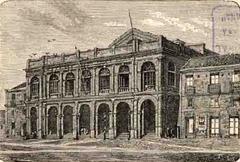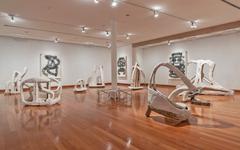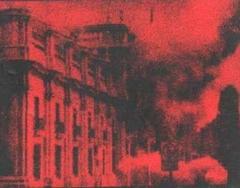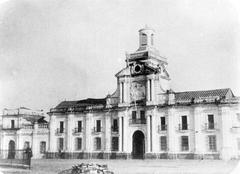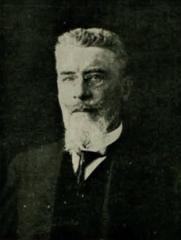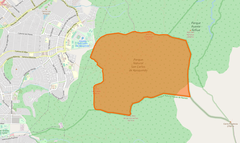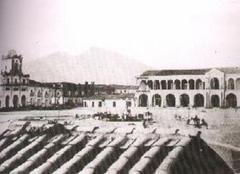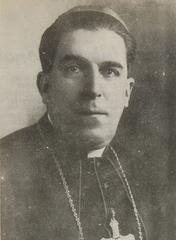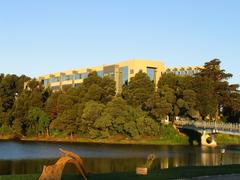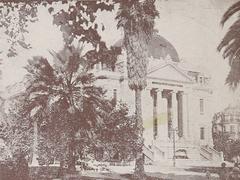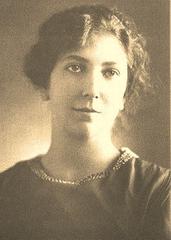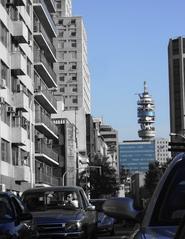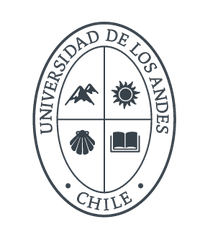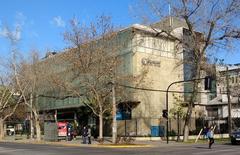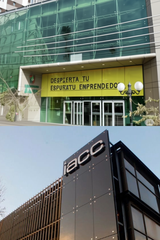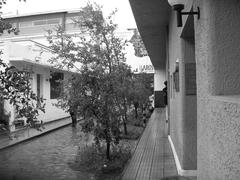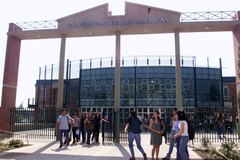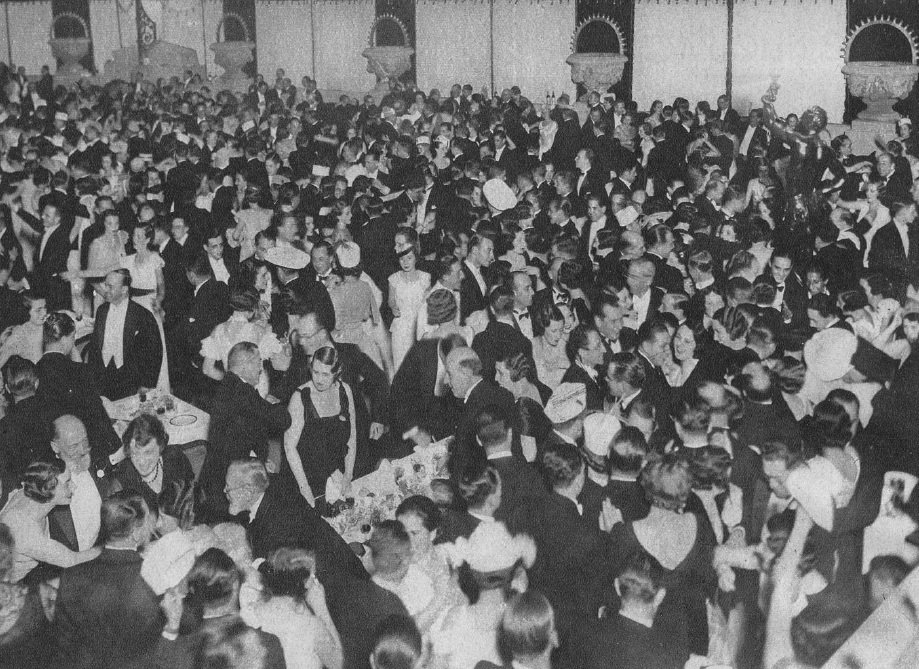
Club de la Unión Santiago, Chile: Visiting Hours, Tickets, and Attractions Guide
Date: 15/06/2025
Introduction
The Club de la Unión, housed in a remarkable French neoclassical building on Avenida Libertador Bernardo O’Higgins, stands as a symbol of Chilean history, architecture, and society. Founded in 1864 by Santiago’s elite and completed in 1925, the club has witnessed—and influenced—Chile’s political and social evolution. Originally conceived as a private enclave for the country’s most influential men, it has adapted over time to reflect broader societal changes, including the admission of women and greater cultural engagement with the public.
While membership remains exclusive, the Club de la Unión occasionally opens its doors for guided tours, cultural events, and immersive experiences, offering rare opportunities for visitors to explore its opulent interiors, art collection, and historical legacy. Its location, steps from key Santiago landmarks such as Plaza de Armas, Palacio de La Moneda, and the Museo Nacional de Bellas Artes, makes it an essential stop for those interested in Chile’s urban and cultural heritage.
This guide details the club’s history, architectural highlights, visiting protocols, and practical tips, providing an authoritative resource for anyone seeking to experience one of Santiago’s premier historical sites. For the latest visiting information, always consult the Club de la Unión Official Website and relevant heritage resources (Wikipedia; Monumentos.gob.cl).
Contents
- Club de la Unión: Historical Background
- Architectural Evolution and Interior Features
- Social and Cultural Impact
- Modernization and Public Engagement
- Visiting Hours, Tickets, and Visitor Information
- Heritage Status and Preservation
- Notable Spaces and Artistic Treasures
- Frequently Asked Questions (FAQ)
- Planning Your Visit: Tips and Nearby Attractions
- Visuals and Media Recommendations
- Summary and Visitor Tips
- Sources and Further Reading
Club de la Unión: Historical Background
Founding and Early Years (1864–1925)
The Club de la Unión was established in 1864 as a private social club modeled after English gentlemen’s clubs, providing a meeting place for Chile’s political, business, and cultural elite (Wikipedia). Initiated by leading figures including Manuel José Irarrázabal, the club quickly became a symbol of exclusivity and influence, shaping the discourse and decisions that marked the nation’s development.
By the early 20th century, the need for a more prominent headquarters led to the acquisition of a prime site along Santiago’s main thoroughfare. After an architectural competition, the building project was awarded to Alberto Cruz Montt, who adapted the original plans of French architect Henri Grossin following his untimely death. The result, completed in 1925, is one of Santiago’s most celebrated monuments to early 20th-century aristocratic taste (Monumentos.gob.cl).
Architectural Evolution and Interior Features
Exterior and Structure
The club’s four-story stone façade, with its classical columns, grand staircase, and symmetrical proportions, stands out along the Alameda. Its monumental scale and elegant ornamentation reflect the aspirations of Chile’s elite during the period (Santiago Turismo). The building occupies an entire city block, directly facing the Casa Central of the University of Chile.
Interior Layout and Decoration
Inside, the Club de la Unión boasts fourteen salons, a library, bar, meeting rooms, and twelve dining rooms, all spread across six levels. Interiors, designed by Carlos Cruz Montt, feature intricate wood paneling (“boiseries”), marble floors, crystal chandeliers, antique furnishings, and an impressive collection of Chilean art (Patrimonio Santiago). Notably, the basement includes a historic marble-clad barber shop and a gymnasium with a mosaic-tiled heated pool.
Artistic Treasures
The club’s walls display works by celebrated Chilean artists such as Pedro Lira, Alberto Valenzuela Llanos, Pedro Subercaseaux, and Álvaro Casanova. Statues, antique vases, and glass lighting fixtures further enrich the club’s ambiance, representing the height of early 20th-century luxury.
Social and Cultural Impact
For over 160 years, the Club de la Unión has served as a nexus of power and prestige, hosting presidents, ministers, diplomats, and business leaders (Club de la Unión - Historia). The club’s main hall, the Arturo Prat Salon, has been the venue for significant political and social events. Its exclusivity was historically reinforced by strict membership requirements and a male-only policy, which changed in 2006 with the admission of the first woman member, marking a turning point in its history (Wikipedia).
Modernization and Public Engagement
While retaining its exclusive character, the club has increasingly engaged the wider public through special events, cultural exhibitions, and collaborations with heritage organizations (Santiago Cultura). Notable recent initiatives include the “Genesis” immersive video mapping show, which uses advanced projection technology to transform the club’s interiors into a dynamic, multimedia experience (Eonarium Experiences). These events provide rare opportunities for non-members to appreciate the club’s architectural and artistic splendor.
Visiting Hours, Tickets, and Visitor Information
General Access:
The Club de la Unión is a private institution, traditionally only accessible to members and their guests (Santiago Turismo). There are no regular public visiting hours.
Special Events and Tours:
Occasionally, the club opens for public events such as immersive shows, art exhibitions, or guided tours. Tickets for these events are sold in advance and should be booked via the official website or event partners like Eonarium Experiences.
Guided Tours:
Guided visits, when available, cover the club’s principal salons, art collection, and historic amenities. Announcements for these tours are posted on the club’s site or through local cultural calendars.
Accessibility:
Due to its historic structure, some areas may have limited accessibility. The club makes efforts to accommodate visitors with mobility needs during special events; it is advisable to inquire in advance regarding specific requirements.
Dress Code:
Strict formal attire is required for entry: jackets and ties for men, equivalent formality for women. This applies during all events and tours.
Heritage Status and Preservation
In recognition of its architectural and historical significance, the Club de la Unión’s building was declared a National Historic Monument in 1981 and included in Santiago’s “Barrio la Bolsa” heritage zone in 1989 (Monumentos.gob.cl). These designations ensure ongoing conservation and restoration efforts, preserving the club for future generations.
Notable Spaces and Artistic Treasures
- Arturo Prat Salon: The principal hall, named after the Chilean naval hero, hosts formal banquets and major events.
- Banquet Hall: Added in 1945, this space accommodates large gatherings and celebrations.
- Barber Shop & Pool: The marble-clad barber shop and mosaic pool exemplify the club’s dedication to luxury.
- Art Collection: Featuring works by leading Chilean painters and sculptors.
- Decorative Ironwork: Ornamental features by Mina Hnos. Ltda., also found in other Santiago landmarks.
Frequently Asked Questions (FAQ)
Q: Can the public visit the Club de la Unión?
A: The club is primarily private. Occasional public access is granted during special events, guided tours, or exhibitions.
Q: How can I buy tickets to visit?
A: Tickets are only available for special events or tours and must be booked in advance via the official website or event partners.
Q: Are there regular visiting hours?
A: No. Access is by invitation, event ticket, or membership only.
Q: Is the club wheelchair accessible?
A: Some areas are accessible; contact the club ahead of time for details and accommodations.
Q: What is the dress code?
A: Formal attire is mandatory for entry.
Q: Are photos permitted?
A: Photography is often restricted, especially in private areas; always ask for permission.
Planning Your Visit: Tips and Nearby Attractions
- Address: Av. Libertador Bernardo O’Higgins 1091, Santiago, Chile (Google Maps).
- Contact: +56 2 2428 4600 | [email protected]
- Transport: Easily accessible by Metro (Universidad de Chile, La Moneda stations), bus, taxi, or rideshare.
- Safety: Exercise caution in the city center, especially at night. Prefer established transportation options (Roam and Thrive).
- Nearby Attractions: Palacio de La Moneda, Plaza de Armas, University of Chile, Metropolitan Cathedral, Museo Nacional de Bellas Artes.
Visuals and Media Recommendations
To best appreciate the club, incorporate high-quality images of:
- The neoclassical façade (“Club de la Unión Santiago historic building façade”)
- Main salons and grand staircase (“Arturo Prat Salon interior at Club de la Unión”)
- Artistic details and period furnishings
- The Genesis immersive show, if available
Interactive maps and virtual tour links further enhance the visitor experience.
Summary and Visitor Tips
The Club de la Unión is a vital part of Santiago’s cultural and architectural heritage, reflecting over 160 years of Chilean elite society and artistry. While access is generally restricted, special events and tours occasionally offer the public a unique window into its opulent world. Always check the official website for the latest updates on visiting hours, tickets, and event schedules. For a richer experience, explore other nearby historical sites and consider using cultural apps like Audiala for guided tours and local insights.
Sources and Further Reading
- Club de la Unión Official Website
- Wikipedia: Club de la Unión de Santiago
- Monumentos.gob.cl: Club de la Unión
- Eonarium Experiences: Genesis Show
- Santiago Turismo: Edificio Club de la Unión
- Bespoke Unit: Club de la Unión Santiago
- Patrimonio Santiago: Club de la Unión
- Roam and Thrive: Travel Tips for Chile
- Memoria Chilena: Historia del Club de la Unión
- Santiago Cultura: Club de la Unión
